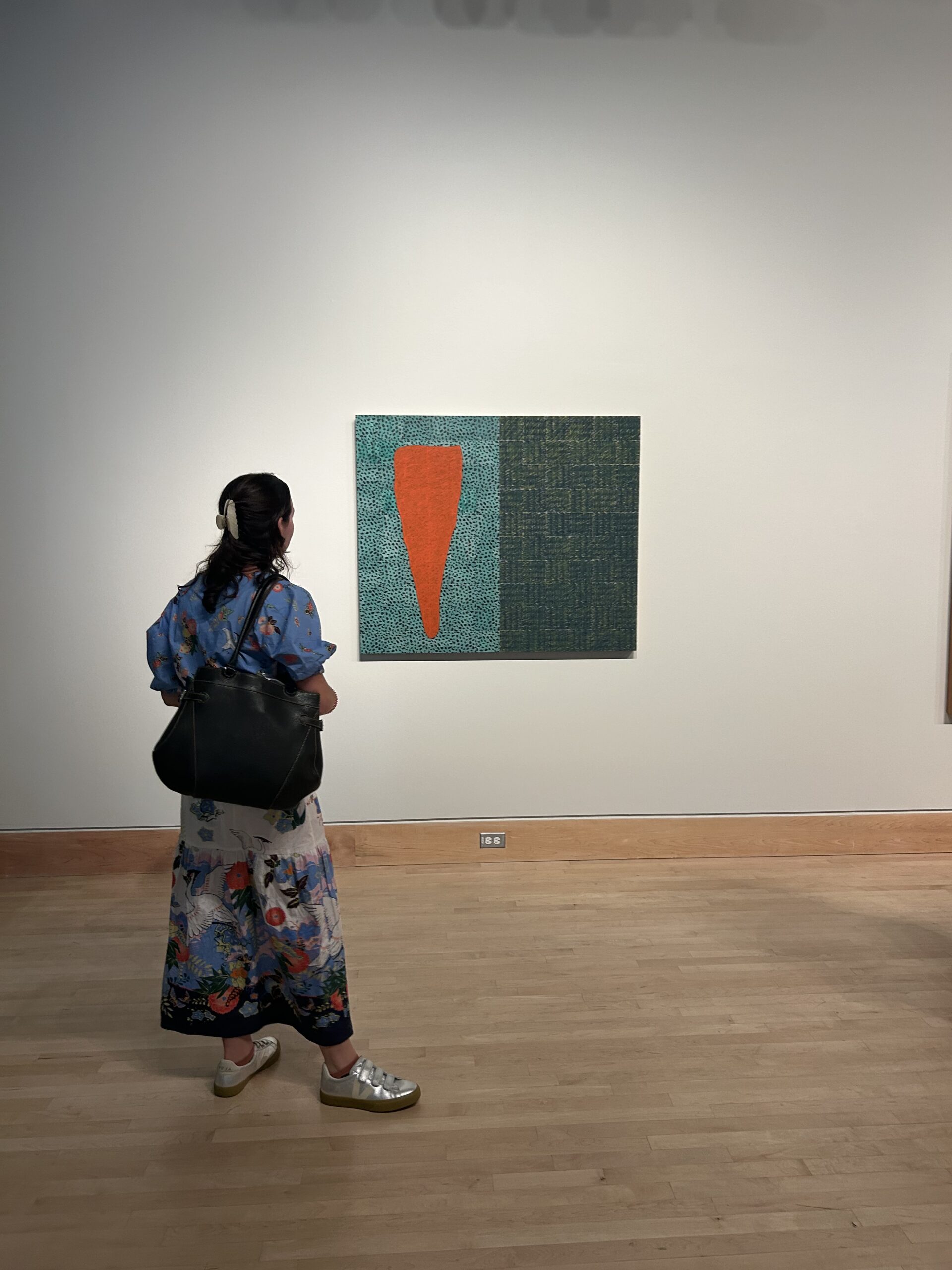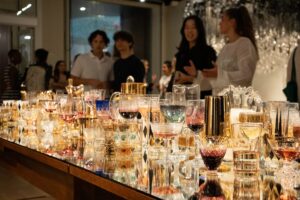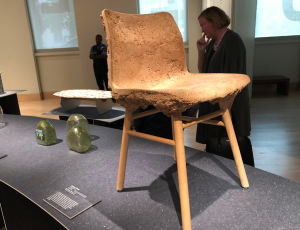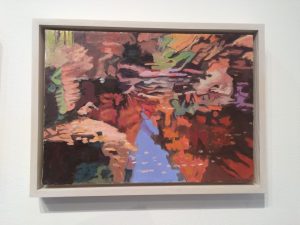The Georgetown University Art Galleries reopened on Sept. 20, unveiling their fall exhibitions “Notes on Form (Intimate Structures)” by McArthur Binion and “Miscegenated Family Album” by Lorraine O’Grady.
In the Maria and Alberto de la Cruz Gallery, “Notes on Form (Intimate Structures)” explores Binion’s work over a near 20-year time span, emphasizing his use of form, shape, and abstraction. Binion layers his personal documents, such as birth certificates, photographs, and address books beneath his oil stick and ink illustrations. Referring to each work as a “self-portrait,” the collection is deeply personal to the now 79-year-old writer and artist.
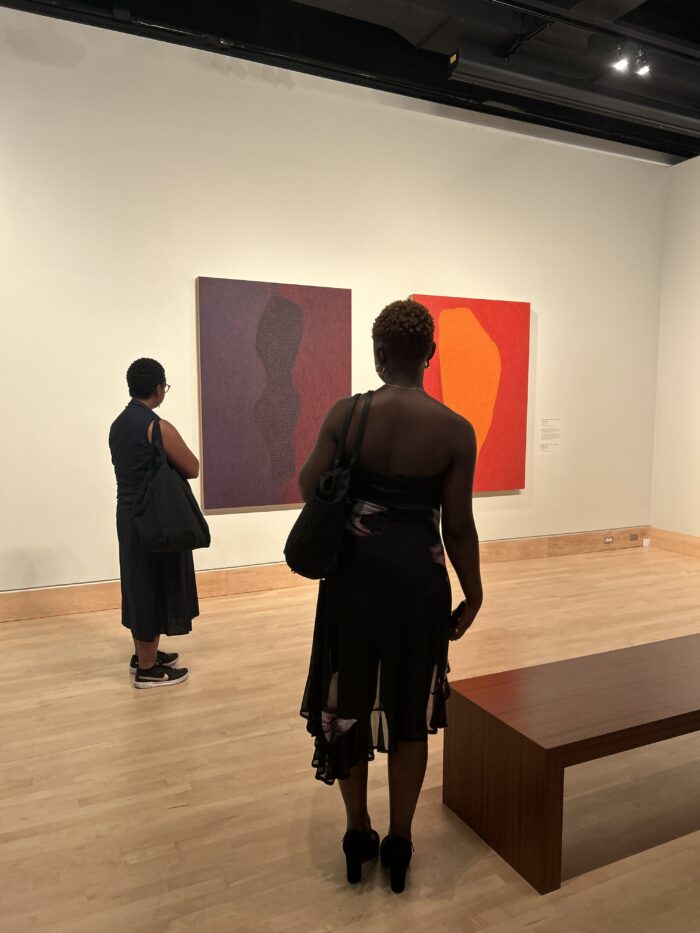 Photo by Julia Carvalho
Photo by Julia Carvalho
Jaynelle Hazard, director and chief curator of the galleries, was instrumental in bringing Binion’s work to the Georgetown community.
“I visited McArthur Binion’s studio in Detroit back in October, and walked away having learned about a body of work that hadn’t been widely exhibited of his practice yet,” Hazard said. “That was really an exploration of how he incorporates shapes into his works.”
Both organic and geometric shapes dominate the canvases, with some canvases having non-traditional slants and curves themselves.
Beyond his technique, Hazard argued that even greater meaning lies hidden in Binion’s incorporation of personal documents.
“The underconscious layer comments on the concepts of race, his lived experience, history, and he obscures it so it’s hidden, but it’s still there,” Hazard said. “It’s a conversation about identity.”
Hazard recognized this collection’s potential to contribute to the growing narrative of art in D.C., specifically that of Black abstractionists. Back in the ’50s and ’60s, a group of artists known as the Washington Color School began experimenting with the use of bright color in their abstractions. Hazard suggested that McArthur’s work naturally builds on that of artists such as Sam Gilliam and Alma Thomas, who were key figures during that time.
Earlier this year, Binion produced two new pieces as part of his “Under:Ground” series. Both pieces are featured, bringing the exhibition full circle.
“The very first time McArthur incorporated an image in his work, it was of his childhood home, back in the 1980’s,” Hazard said. “This work is both a departure and a return.”
Binion himself attended the opening reception and shared his advice for student artists.
“Work harder than anyone else,” Binion said. ”The goal is for them to make work like no one else makes. Find out your emotional center.”
Across the gallery, the black and white photographs from “Miscegenated Family Album” hang on the walls. O’Grady completed her 65-image collection in 1994 following her 1980 live performance. The Lucile M. & Richard F.X. Spagnuolo gallery features 16 of these works.
The pieces are diptychs–prints that display two images side by side. They juxtapose ancient Egyptian artwork depicting Queen Nefertiti with photographs of O’Grady’s older sister. She also included depictions of both women’s family and friends.
The diptychs draw parallels between the physical appearance of the women, their mixed race backgrounds, and their estranged relationships with their sisters. O’Grady was mourning the death of her sister while she created the collection.
Julia Krause (SFS ’29) shared a reflection on the gallery while attending the opening reception with the Georgetown Art Ambassadors program.
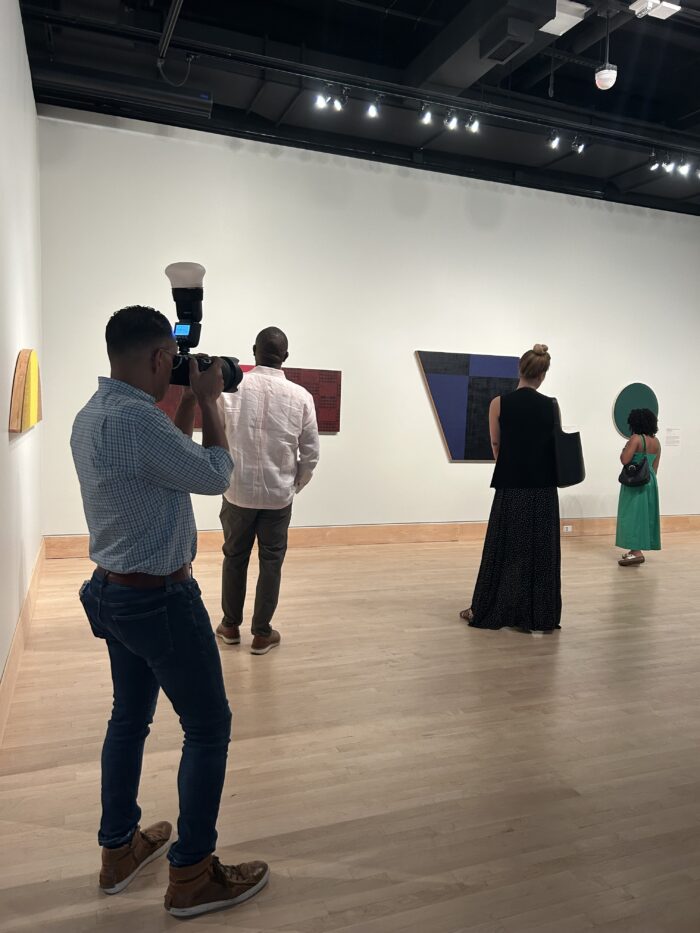 Photo by Julia Carvalho
Photo by Julia Carvalho
“These are ancient artifacts, but they still have a very present connection to people and cultures today,” Krause said.
Krause found special meaning in a photo titled “Ceremonial Occasions I”. The print shows O’Grady’s sister, Devonia, as matron of honor at a wedding beside Nefertiti performing a lustration, which is a cleansing ritual.
“I feel like ceremonies are something where it’s so clear to draw that line between past traditions and present traditions,” Krause said. “Those are always strongholds of culture, so it’s a particularly powerful one.”
Krause connected with the diptychs in part because of their familiarity.
“I think photography is not a medium that is seen as art very often, that I think is really popular with, especially, young people,” Krause said. “I have so many friends that have a digital camera that take really great photos. So having photography like this be put up in a museum feels more connected to art that I could make and art that I could understand.”
Both exhibitions will be on display until Dec. 7 in the Edmund A. Walsh building. The galleries are open to the public from 10 a.m. to 6 p.m. Wednesday through Saturday and 1 p.m. to 5 p.m. on Sundays.


